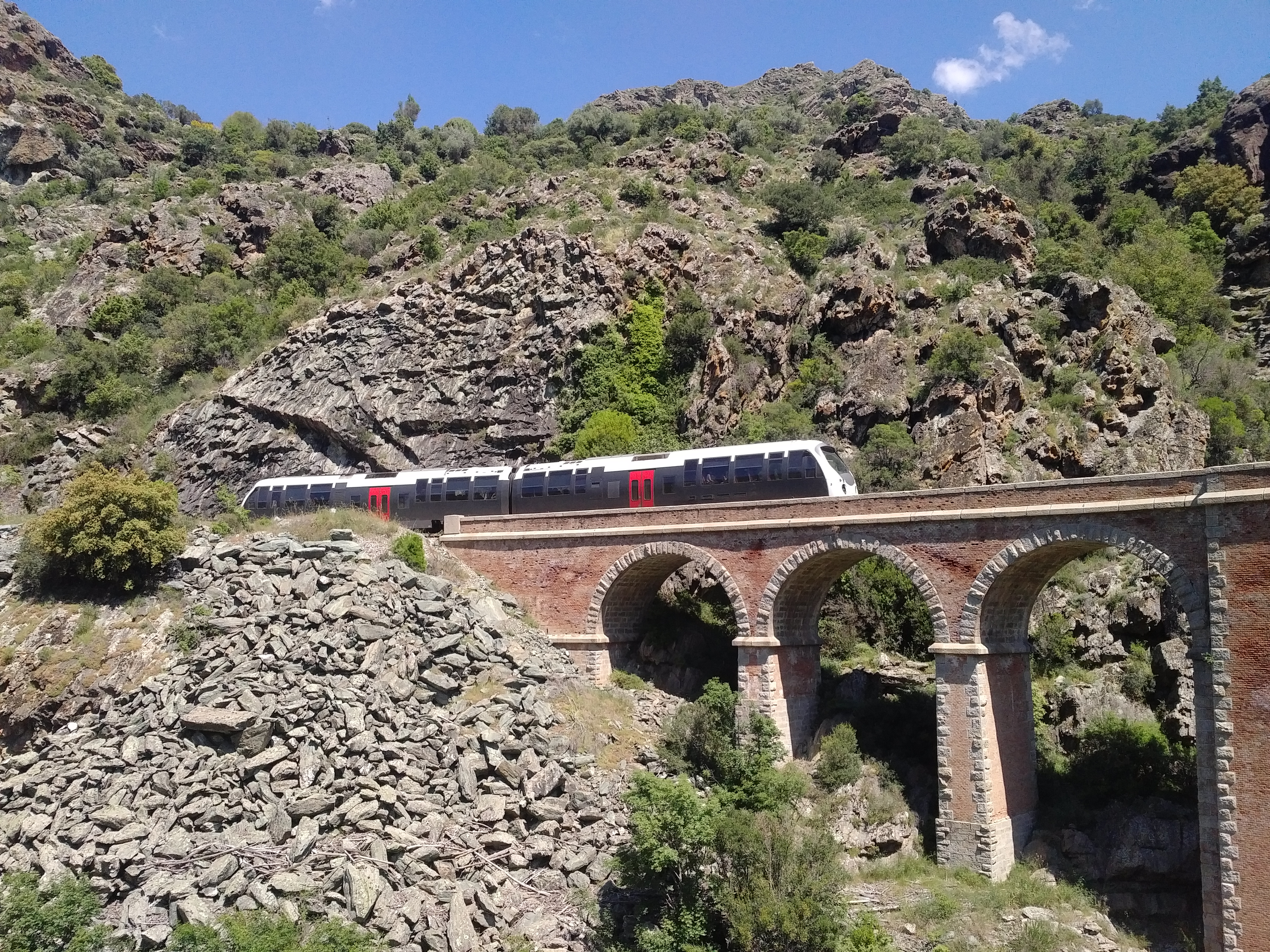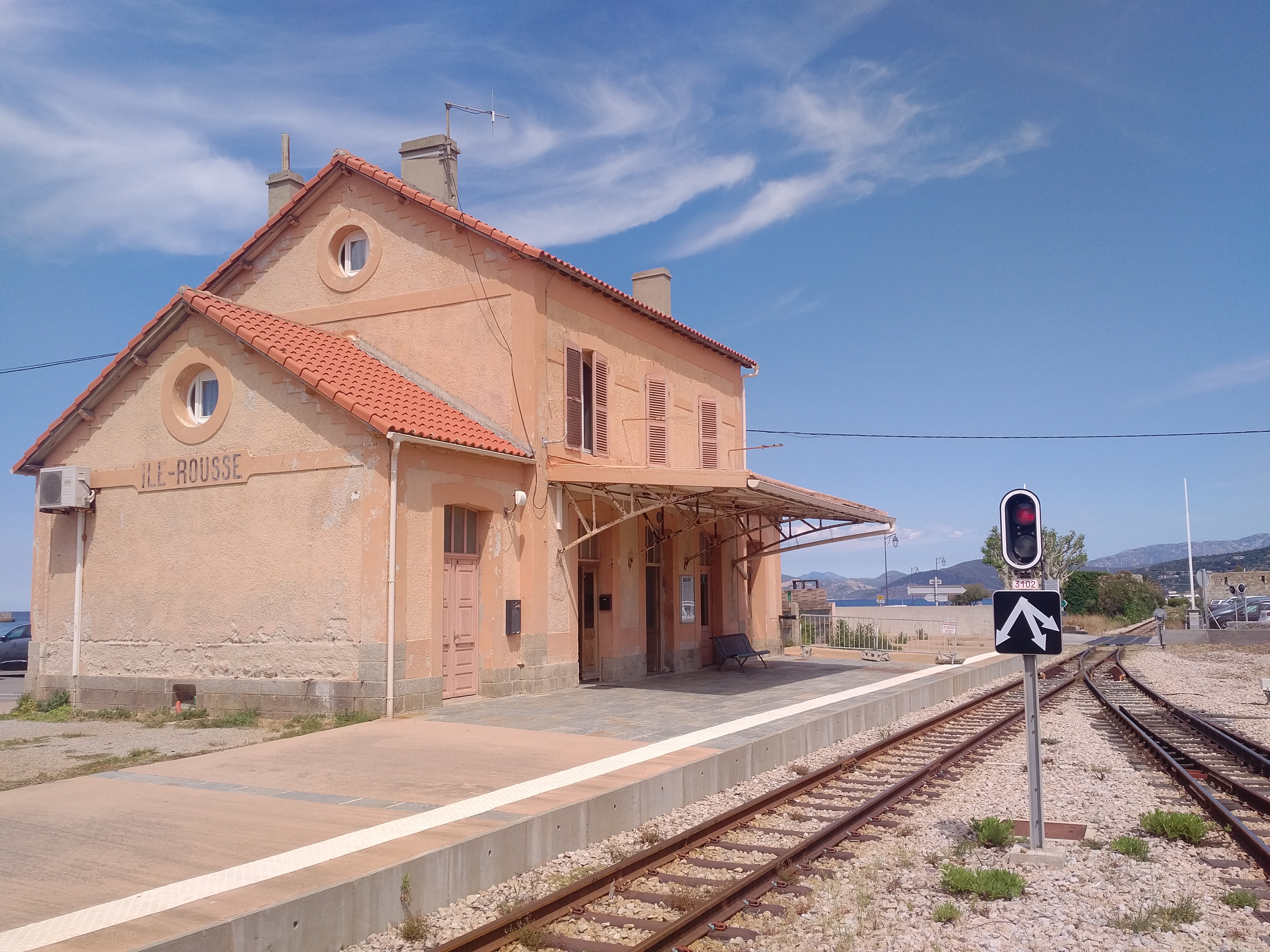FBS-Timetables for Corsica
Creating Graphic Timetables and Other Timetable Documents
The Corsican railway network

In the year 1855, the creation of a railway network in Corsica is first mentioned in the context of shortening the connection between France and Algeria, with train lines through Corsica and Sardinia. After serval projects and lines proposed, 3 lines are finally validated for the future network:
- The line called “Central Line”, between Bastia and Ajaccio, through the centre of Corsica, passing Ponte-Leccia and Corte;
- The line called “Oriental Coast Line” between Cazamozza on the central line, and Porto-Vecchio and Bonifacio in the south, following the east coast of Corsica;
- The line called “Balagne line”, from Ponte-Leccia on the central line, to Calvi, through the town of Ile-Rousse.
Two first sections of the two first lines were opened in February, 1st 1888, and the network was fully operational in September 1935. Nevertheless, at the end of World War Two, the Oriental Coast Line was too damaged, and ultimately closed in 1953. Today, only the other two lines remain and form a “Y”-shape, for a total length of 232 kilometres.
Entirely in single-track, metric gauge without electrification, the network has 23 Stations and 40 stops points. Unlike the network in France, it belongs directly to Corsican authority, instead of SNCF Reseau. In the same way, the trains were operated by SNCF Voyageurs between 1981 and 2011, but are today operated by a private Corsican company.
With a difficult itinerary, short curves and high slopes, the maximum speed of the trains remains slow: 4h are necessary for the full 158-kilometres journey between Bastia and Ajaccio, with an average speed of 40 kilometres per hour. That is why the Corsicans have named their train “The small train” (« u Trinichellu » in Corsican).
Miscellaneous

Without any modifications since 1953, the network was threatened with closure serval times, due to the lack of maintenance, but was always supported by the local inhabitants. It is today equipped with a simplified light signal system, modern AMG800 vehicles and is operated the whole year. A few extensions projects are also proposed or studied (for example an extension to the Ajaccio city centre, or a partial reopening of the Oriental Coast Line to Folelli), without any realisation date today.
Train Operations
Two « Intercity » relations without changes link Bastia with Ajaccio (with 5 trains per day and direction plus 1 train per day and direction between Bastia and Corte) and Ponte-Leccia with Calvi (with 2 trains per day and direction, with one which starts from Bastia). The timetables are also fully organized to permit journeys between Ajaccio or Bastia and Calvi, with a good connection in Ponte-Leccia.
In addition to that, around the 3 ends of the lines, there are 3 suburban relations, between Ajaccio and Mezzana (8 trains per day and direction), Bastia and Cazamozza (16 trains per day and direction) and Calvi and Ile-Rousse (5 trains per day and direction). This last relation is also named “Balagne Tramway”.
The same way as for the Thailand network (also available as example in English on the website www.en.irfp.de) the infrastructure data required in FBS for the run times calculations (slopes, curves, kilometric points) was obtained by geographic data conversion from the website OpenStreetMap.
A lot of stops points (and small stations) are request stops. That has 2 consequences: the first on the information for passengers (which must be informed before their trip), the second on the run times calculations (a lot of on demand stops can minimize the global stop time, with the possibility of not stopping at all the stop points). It is naturally possible (and necessary) to declare theses stops as on demand in FBS, along with a regular stopping time shorter than standard (here equal to 0.2 minutes, being 12 seconds).
Creating Additional Timetable Related Documents

After the conception of the graphic timetables, (produced from the timetables provided by the Corsican railways), it’s possible to create various timetable documents in FBS, either for the railway company or the passengers.
When the line slopes and curves are displayed, we easily notice the mountainous and curvy aspect of the Corsican network.
On the next page, there is an example of a customer’s timetable, with the names of the stations, both in French and Corsican, and the on-demand stops, marked with a little cross in front of the stop times. It’s also easy for the travellers to identify the possible connections, especially in Ponte-Leccia, with little arrows highlighting them.
The different fares zones on the Balagne line are also easily noticeable, with the colours in the timetable.
